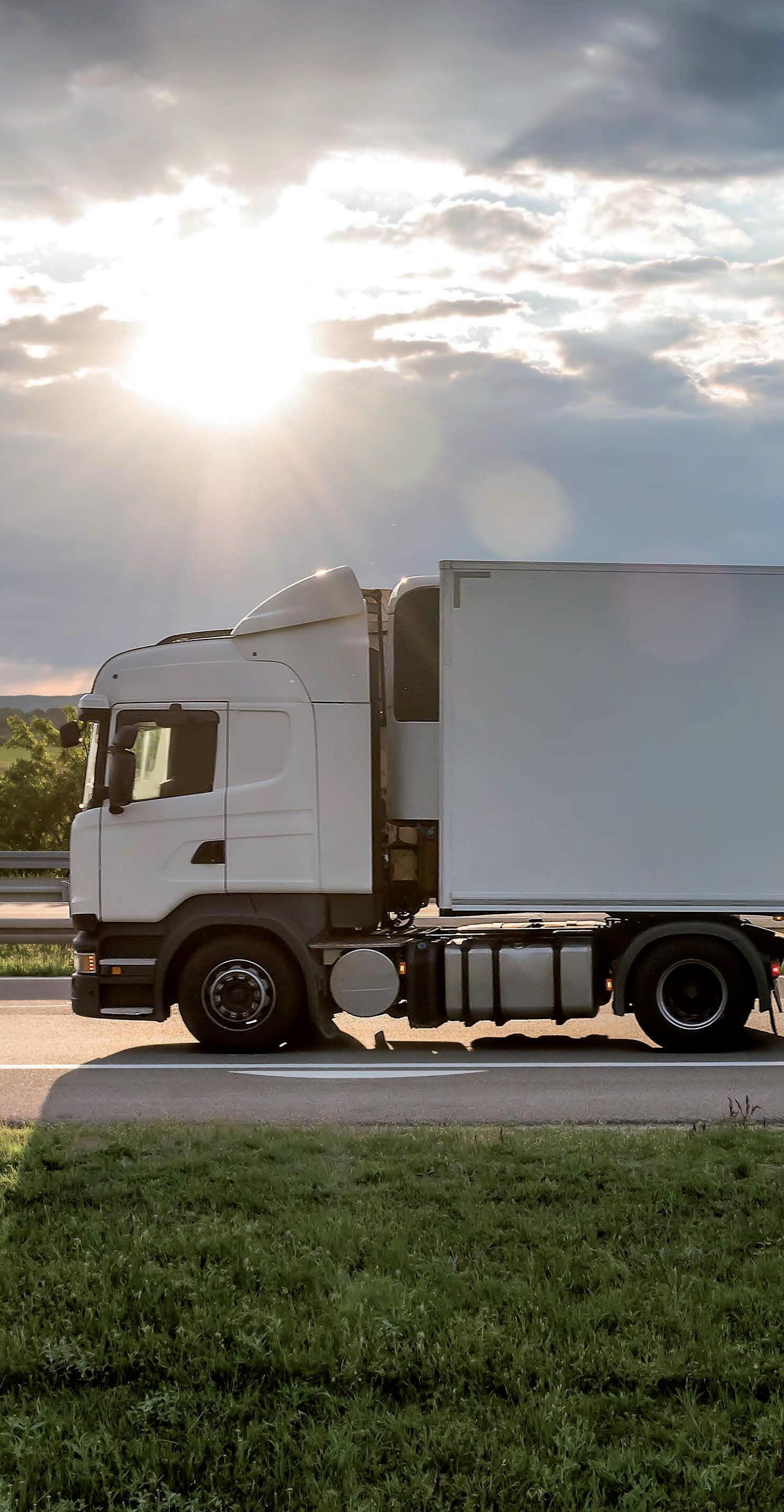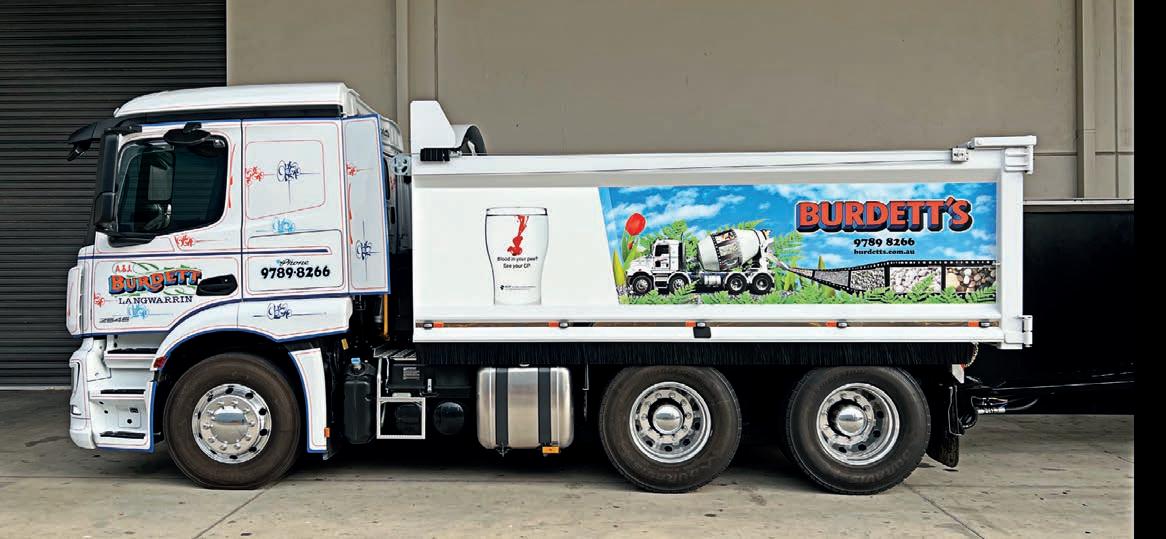
4 minute read
LL AREAS
“The telematics on the truck will still alert me that it is a trailer issue,” says Rod. “That means we can send an external mechanic out to deal with the trailer rather than getting the OEM out there who is there specifically for the truck. It just makes that whole process a lot easier.” judgement. Rod logged into the Detroit Connect telematics linked to the truck and it immediately identified there was a brake issue with the A-trailer.
Fault finding is made much simpler this way. Detroit Connect will log any minor fault as well. Based on a prompt from a driver who has experienced an alert, Rod is finding he can have a closer look to determine what it is and cancel out, if need be, the driver.
“What we found out was when he pulled onto the weighbridge he’d blown a brake booster,” recalls Rod. “That’s all it was. Instead of getting the OEM out of Ballarat or Laverton, I’ve got another mechanic I regularly use nearby. I got him out to replace the brake booster. That’s how accurate the telematics are.” around,” says Rod. “The outcome for us was huge.” of a kilometre over 12 months is huge win for us,” says Rod. “It’s thousands of dollars especially given the price of fuel at the moment.”
The big benefit in that situation was the time it saved Rod and his partners.
For the mechanic attending the breakdown, knowing exactly what is needed rather than loading up with all manner of parts and tools in the hope that they will have enough on hand to solve the problem delivers, for everyone involved, an efficiency that has many positive residual effects.
“Detroit Connect helps you to give the relevant information and the heavy vehicle mechanic knows when they go out that they’re taking what they need,” says Rod.
Measuring fuel burn is mixed up between mileage and hours given the network for Burdett’s is compressed in large part. The trucks do, however, amass significant idle hours at quarry sites.
“Our B-double guys do roughly around 180,000kms a year,” he says. “Our local trucks which are our quarry trucks, they do around 140,000kms a year give or take.”
In Rod’s experience, Detroit Connect is leaps ahead of the other telematics he’s used across his mixed fleet. It monitors driver behaviour as well, which he uses to ascertain whether any additional training should be offered. On-road incidents not related to the driver are also flagged by Detroit Connect.
“At the minute we’re finding the Cascadia is a pretty good product,” says Rod. “Not only are the drivers liking the truck as it delivers outstanding comfort but we’re seeing real advantages in most areas that count. Serviceability will tell within time.”

Parallel to Detroit Connect, Burdett’s runs a Webfleet tracking system. It offers a dashboard that monitors and categorises different aspects of driver behaviour from heavy braking, heavy cornering to acceleration so that evaluations of individual drivers can be made accordingly over a day, a week or month.
“The location of a driver is provided which proves useful,” says Rod. “That way when it flags heavy steering you can locate that he was up in the hills somewhere where it’s been very cornered and that’s why there’s been heavy steering.”
It’s no secret the workforce across the entire transport sector and especially truck driving is ageing. Demographic challenges are not an issue at Burdett’s given it boasts an even spread of driver ages. Rod says the company employs many drivers who have only been in trucks for a few years while retaining older drivers who have been doing it most of their adult life.
“What we’re finding with the younger guys, is that they’re a lot more adaptable to the new technology,” he says. “Which is just a given. In saying that, the older guys do take the newer technology on board, and we get great outcomes.”
All of the fleet’s trailers are on service contracts. Burdett’s primary supplier of tippers is BTE, whose good reputation precedes it. For Rod, the advantage, above all others, when working with BTE is that they’re hyper-aware of fleet requirements. “When we put in an order with them it makes the order side of it a lot easier and they can complete the PBS compliance for us because they have all of the specifications already there,” he explains. “There’s no real great external involvement. That streamlines the process for us.”

Burdett’s recently purchased six new Kenworth T410 and T610s with three new K200s already due to arrive soon. These are all considered replacement trucks. Mack, another one of their regular suppliers, should deliver new vehicles by Q4. More recently, three new UD Quons have joined the fleet. The UDs are used particularly for restricted access sites they encounter at many smaller garden supply centres. According to Rod they are handling the workload extremely well towing a quad-axle behind them grossing out at around 54 tonnes.
“Because they are a cabover and a nice, little, short unit, the UDs are reliable and return good fuel economy,” he says. “Our R&M is relatively low on them. They just seem to be good value. It’s a simple as that.”
Some of the UDs are featuring redesigned livery as part of a campaign to promote Beat Bladder Cancer Australia. It’s a message that resonates personally with Andrew Burdett who acted on an early warning sign himself. He is currently undergoing bladder cancer treatment which he commenced nearly a year ago. Rod has received a uniformly positive response from drivers about the Bladder Cancer awareness campaign that has been expanded now to five tipper combinations. “They’re happy to have that on the side of the trucks,” he says. “It is gathering a lot of interest and that’s what it’s all about.”












